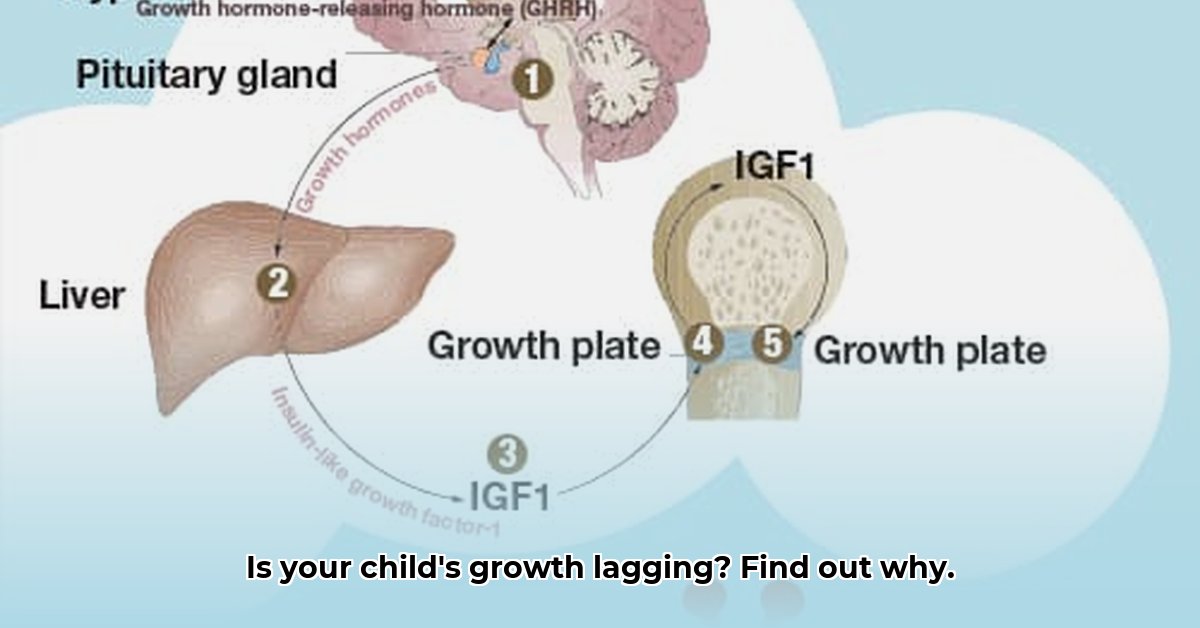
Understanding Growth Hormone Deficiency (GHD)
Growth hormone deficiency (GHD) means your body doesn't produce enough growth hormone (GH), a crucial hormone for growth and development. Think of GH as the conductor of an orchestra – ensuring all the body parts work together harmoniously. GHD can affect both children (childhood-onset) and adults (adult-onset), with different causes and symptoms. It's more than just about height; it impacts your overall health and well-being. Is your child unusually short for their age? Are you experiencing persistent fatigue or changes in body composition? These could be subtle signs.
Causes and Symptoms of GHD
GHD can be present from birth (congenital), often due to genetic factors affecting the pituitary gland (the gland that produces GH), or it can develop later in life (acquired) because of factors like brain tumours, head injuries, or infections. Acquired GHD in adults often stems from pituitary damage caused by illness or previous treatment.
In children, common symptoms include noticeably short stature for their age, delayed puberty, increased body fat, and persistent tiredness.
In adults, symptoms may include reduced muscle mass, increased abdominal fat, low bone density (osteopenia or osteoporosis), persistent tiredness, and decreased energy levels. The severity of symptoms depends on when GHD starts and how severe the deficiency is. Do you find yourself constantly exhausted or noticing significant changes in your body shape? These could be warning signs.
Diagnosing GHD
Diagnosing GHD involves a thorough evaluation. Your doctor will start with a comprehensive physical examination and assess your medical history and symptoms.
Key Diagnostic Tests:
- Blood Tests (IGF-1, IGFBP-3): These tests measure hormones indirectly reflecting GH levels in the body. Low levels might suggest GHD; however, normal levels shouldn't rule out GHD, as other factors can impact these results. This is like checking the orchestra's overall sound.
- Growth Hormone Stimulation Test: This is the gold standard. This test involves administering a stimulant (such as arginine, insulin, or clonidine) and measuring your body's GH response. A weak response confirms a deficiency. This is like checking the conductor's ability to lead the orchestra.
Treatment for GHD
The primary treatment for GHD is synthetic growth hormone (somatropin) injections. These injections replace the missing hormone, helping your body's processes get back on track. The dosage and administration method depend on your age, health, and the severity of the deficiency. Daily injections are usually required.
Possible Side Effects: While rare, potential side effects include joint pain, swelling, nausea, or changes in blood sugar. Regular check-ups are essential to monitor the treatment's effectiveness and manage any side effects. A consistent approach is key to successful treatment.
Living with GHD: Long-Term Management
Living with GHD requires ongoing management and a proactive approach. Regular check-ups with an endocrinologist are crucial for monitoring your progress and adjusting treatment as needed. A healthy lifestyle, including regular exercise and a balanced diet, plays a significant role in overall well-being. For children, psychological support can address concerns about their growth and development.
Remember that GHD is manageable. With the right treatment and consistent monitoring, you can live a full and healthy life. Early diagnosis is key to optimizing treatment outcomes. Does the thought of ongoing management feel overwhelming? Remember, you’re not alone, and support is available.
Conclusion: Taking Control of Your Health
GHD, whether childhood-onset or adult-onset, significantly impacts various aspects of physical and mental well-being. From understanding the root causes and symptoms to navigating diagnostic tests and treatment options, a comprehensive approach is essential. Early diagnosis and appropriate medical intervention are vital in managing GHD effectively and positively influencing long-term health outcomes.
Key Takeaways:
- GHD affects both children and adults, with different signs and symptoms.
- Diagnosis involves a combination of physical examinations, blood tests, and the growth hormone stimulation test, a critical test in confirming diagnosis.
- Treatment primarily involves synthetic GH injections, requiring regular monitoring and adjustments.
- Proactive management, including regular check-ups, lifestyle changes, and psychological support, is crucial for managing GHD and improving overall quality of life.